I recently decided to remodel my hallway and replaced an old rug with a new runner. Nowadays, I am so happy, that I’ve done it. My hallway looks cozy and great. My guests put off their street shoes and immediately step barefoot on the soft pile of the runner. You may also dream about getting the runner for your hallway, bedroom, or kitchen. But you have lots of questions on this topic, like, “How long a runner should be?” and others. So, let’s look for the answer.
As a rule, the runners can be of standard size. In this case, their length is from 6 to 14 ft. Sometimes the runners are sold in the rolls with a certain width (on average, 2-4 ft) and any length you need. In this case, the shop assistant will measure and cut the runner of a certain length for you.
How Do You Size a Runner?

Runner carpets come in a variety of patterns and sizes. It depends on the occasion. Is it for a hallway or a staircase? You will need to keep the size of the hallway and staircase in mind too.
So, before you define the size of your runner, first of all, you should define the place, where you can put it. A runner rug can be the perfect finishing touch to a space like an entryway or mudroom. And in rooms like the bathroom and kitchen, they can also be the ideal solution for when you want some comfort and design continuity but traditional area rugs just won’t work.
Here are the ideas, of where the runner can be placed:
In the bedroom
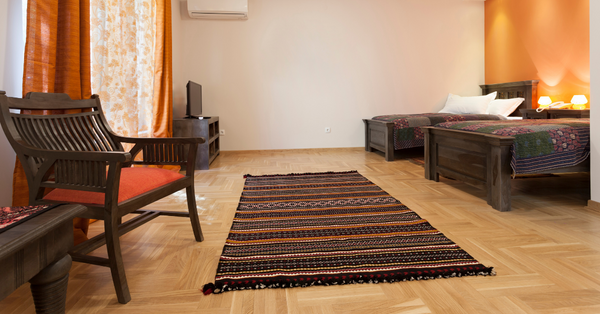
Generally, I advise putting a rug in the bedroom. But there are situations when it is better to choose a runner. First of all, getting the runner is a great option, if you are on a budget. You may choose the runner of the same material as the carpets, but they will cost cheaper. Of course, the runners usually have a standard width and their patterns are simpler. Nevertheless, they still look great and cost less. Besides, a runner can be put between twin beds.
In the hallway/entryway
Hallways and entryways are the most popular premises for putting runners there. The reason is the shape of these entry areas – as usual, they are narrow and long. The runner ideally fits such places. But if your hallway/entryway is square, it is better to use the rug for this area.
Runners are a great way to add charm to a hallway. They also protect the flooring of corridors from prolonged traffic. Runners placed in hallways tend to run parallel to the surrounding walls. These carpets are supposed to cover 3/4 of the length of the hallway.
WARNING
Do not place furniture on a hallway runner!
An ideal hallway runner leaves a bit of flooring on either side of the carpet. The occasion gives a runner its purpose. A runner placed in the hallway of a museum will have different dimensions and styles compared to a runner placed in a hotel corridor.
In the kitchen
I know many homeowners, who like using runners in the kitchens. In this area, there are a lot of food remnants, which may fall into the carpet pile. The runner is easier to roll down and simply shake on the porch. Besides, it is cheaper to replace in case of hard stains and spills. Very often the runner is an ideal choice to place between the table area and the sink in the kitchen.
On the staircase
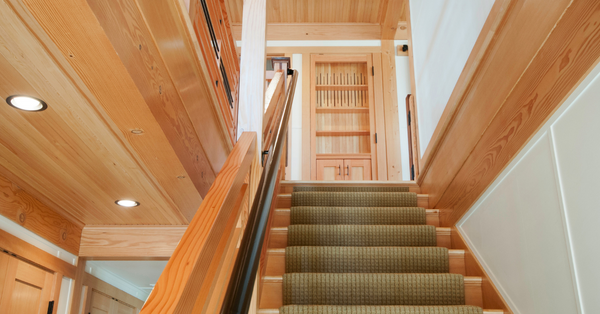
Runners over stairs offer long-time protection against the wear and tear of the flooring. If you want your stairs to age like fine wine, you might want to place a runner over them. They can serve their purpose also when you have someone in your house who is prone to falling down the stairs.
You might want to measure the width of your staircase before rushing off to buy a runner. A staircase with a flat landing requires two runners to be placed at opposite ends of the stairs. Staircase runners tend to be longer than other runners.
PRO-TIP
STAIRCASE RUNNER
Be sure to measure the distance of the runner from the walls.
The size of the risers and treads of your stairs will determine how much of the runner each part will take. Two extra risers have to be added if the stairs have a landing in between with a turn. With that said, the turn has to come at an angle of 90 degrees.
The runner could run continuously along the stairs without any breaks.
PRO-TIP
FOR FLAT LANDINGS
You can always use a new runner on the other part of the stairs.
Distance from the wall is kept at 3 inches. If you are concerned about how time-consuming measuring a runner will be, you can always get a cut roll runner. These runners are purchased through custom orders. A section is cut from a continuous length of the carpet.
To keep your staircase from damage and avoid the slippery in this area, you can put a runner on the staircase. I have a big post about placing a runner over carpeted stairs, so check it, if you are interested.
Of course, the size of the runner depends on the measurements of the area, and where you are going to put it. But before taking the measurements, consider, what type of runner you want to get. According to their sizes, the runners are:
1. The runner of a standard size
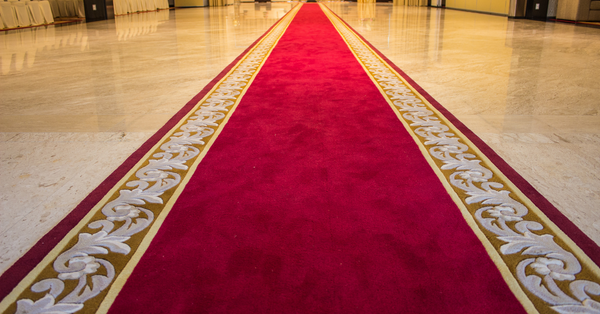
A runner is usually between 6 and 14 feet long. The size of the hallway comes into consideration when placing a runner. Ideally, a runner should not be very wide.
Of course, there’s no such thing as a one-size-fits-all runner rug. There are various runner rug sizes that you’ll need to consider for your space, and while it might take a little bit of math to get the exact size that you need, it’ll be worth it to end up with a runner that’s a perfect fit.
2. The part of the roll with a standard width
Sometimes the runners are sold not as a separate item with a certain width and length, but in a roll. Thus, you have a certain width (as usual, from 6 to 14 ft) and the length you can define yourself. The shop assistant with cut the runner to the length you need and then will process the edges with an overlock.
To help you out, we’ve put together this quick guide to choosing between different runner rug sizes—including how to measure a runner rug for your stairs and a few tips for expertly styling your runner once it’s in place. Let’s get to it.
How Long Should a Runner Be?
Width between 6 and 14 feet is considered to be ideal for a runner. A little space is left when placing a runner in a hallway on either side. This is done to keep the runner in the center.
How to Measure your Runner? A Guide
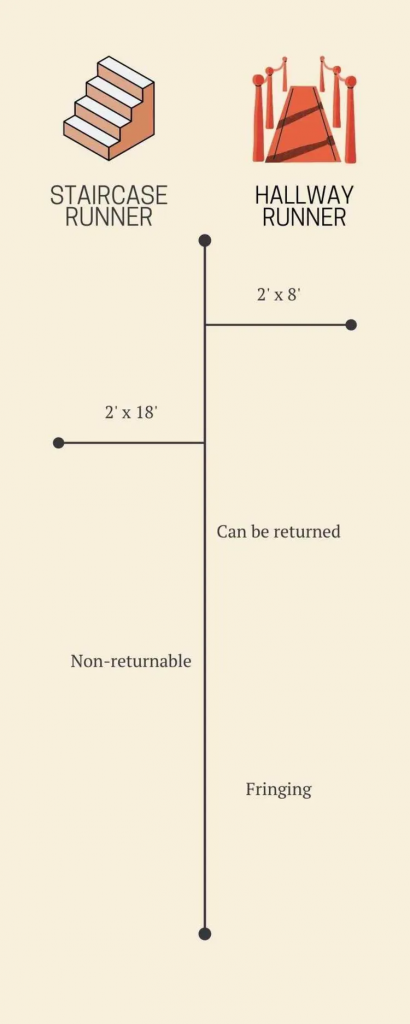
So, you have already made up your mind to get the runner for the hallway, the kitchen, or any other area. In this case, you should define its length and width as precisely as it is possible. Follow these steps to take the measurements correctly and find the runner, which will ideally match your place.
Step 1: Measure your space
The first thing you should do to find the runner of the ideal size for your home is to measure your space. It is better, if the area you are going to put a runner at, has a rectangular shape. Besides, the area shouldn’t be very big. The runners look great in the long narrow corridors or kitchens. If you have a big hallway or a living room, it is better to choose a rug with a rectangular shape for it.
So, you have found a place suitable for the runner shape in your house. Now you have to measure its width and length.
Step 2: Define the measurements of the future runner
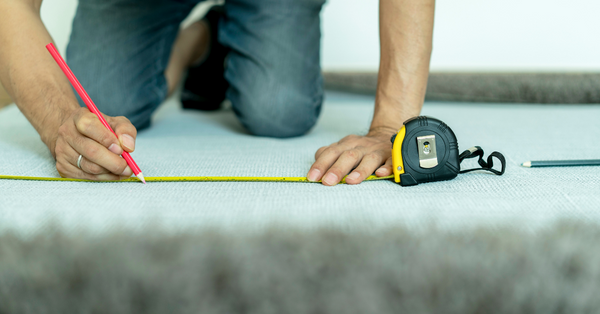
If you have a standard premise, you can get the standard runner with a width of 6, 8, 10 ft and length of 10, 12, 14 ft, etc. Choose the runner of a standard size with the width and length, which fits your place ideally. If the size of the runner you need is not standard, then you should get the runner from the roll. Thus, you can choose any length you need.
Step 3: Don’t get the wall-to-wall runner
I know that you may have an idea to get the wide runner, which will fill the whole space of your corridor or hallway. But that’s not a good idea. In this case, the edges of the runner will scroll. So, make sure, the size of your runner is small enough to leave a little gap between the walls. The runner must lie symmetrically in the center.
Step 4: Measure the runner with clearance to the door
It doesn’t mean, in what room you are going to put your runner, make sure, you have left enough space in front of the door to let it open fully.
I am sure, these tips will help you to define the length of your runner precisely. And you’ll enjoy its great look.
Conclusion
We have looked at the ideal size of a runner which is between 6 and 14 feet. The type of runner determines how long it is. Measuring a runner involves a variety of different techniques. Read and put into practice my tips for measuring the ideal size of the runner length. And then, enjoy your new runner!
